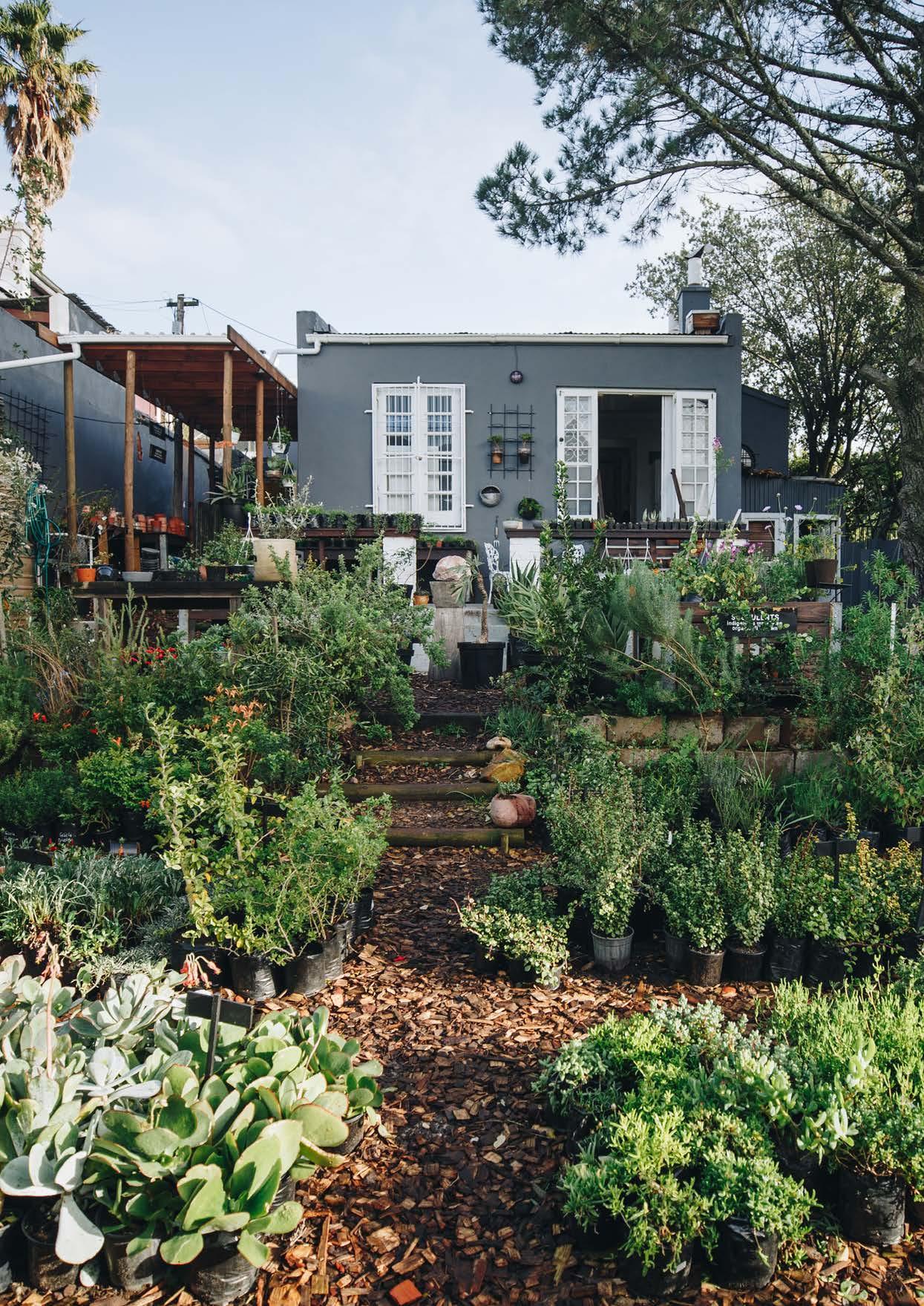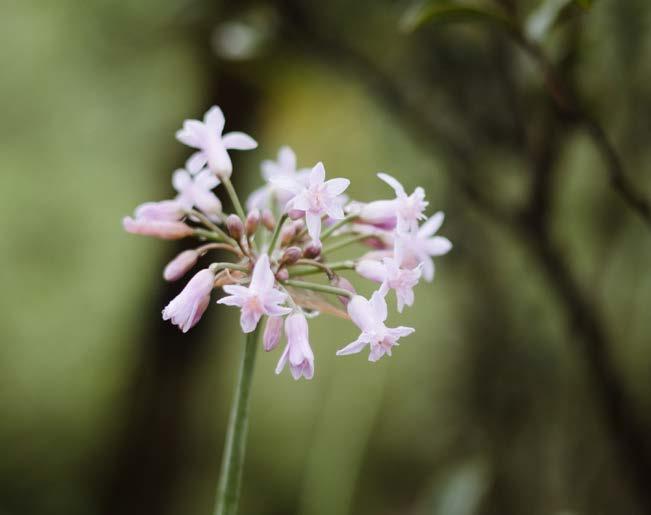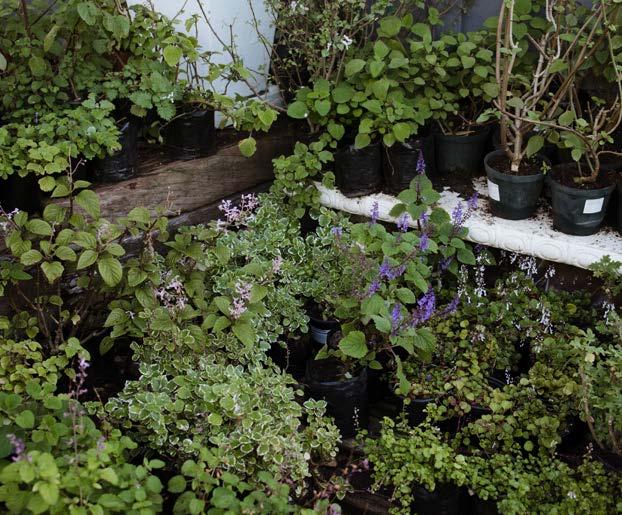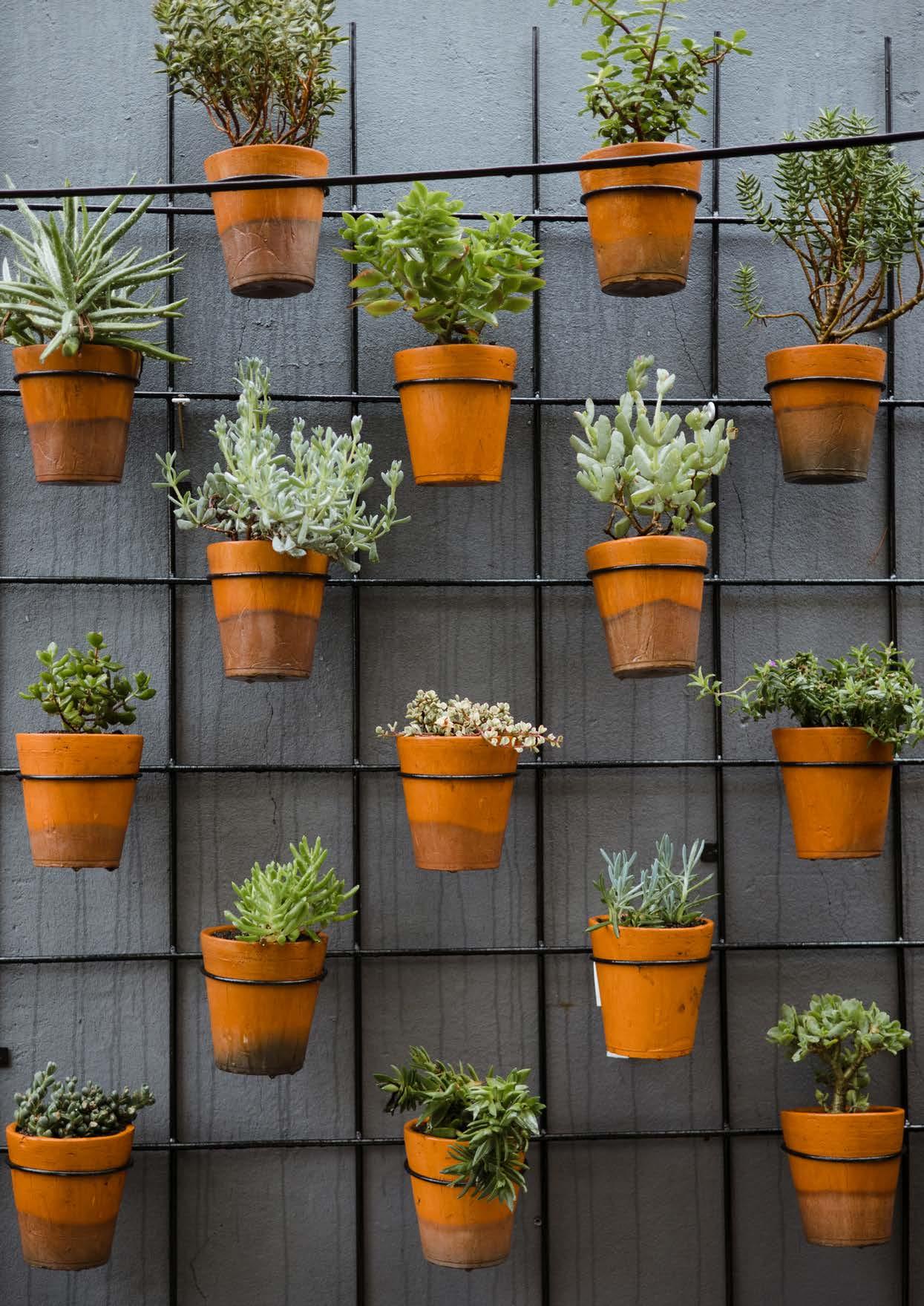
4 minute read
We’re Bringing Biodiversity Back, Yeah!
Abiodiverse garden is so much more than the human experience. It provides life within its bounds, and far beyond it.
Consider your home as a tile in a mosaic; where the aim is to create clusters and connections of green, with all living organisms exchanging freely. Minor adaptions to your garden, with the addition of rocks, manipulation of soil and inclusion of new plant species may transform the lives of so many creatures. Ditch the leggy rosebush for some lush, indigenous perennials and flourishing shrubs and enjoy the beauty of a thriving, resilient garden. Resilience comes from diversity. Diversity is not only referring to species selection; make sure you have diversity in both the structure and the form you plant in your garden.
Your garden can become a critical part of the network of biodiversity exchange in your area. The current urban condition has fragmented natural systems, making it impermeable for living organisms to move through the system. However, if we can begin to connect and cluster our natural systems to be active components of the mosaic of natural systems, we stand a chance at true urban biodiversity.
Our birds, bees, beetles and butterflies pollinate so many of our plants, without them, our gardens don’t stand a chance. There are a few simple elements one can introduce to encourage pollinators to inhabit the garden.
SOIL
Starting from the bottom, the soil should be rich with organic matter and protected with a layer of mulch. This encourages microbial life, which invites all sorts of organisms to the garden.
In areas where there is rapid drainage, such as around your gutters or hose pipe, have rockery. Rockeries provide versatile habitats for other plant species and they create cavities for protected hives and other bug homes. Bees and butterflies like to sun themselves to warm up before take-off, rocks and bare soil provide the best kind of tanning beds for them. They also allow for them to have safe spaces to drink and eat.
PLANTING
When deciding what to plant in your garden, make a point of exploring nearby nature reserves. It’s useful to observe some indigenous natural landscapes around you to understand which plants work well together. Zoning plants together with similar needs makes it easeir to care for your garden. They will have similar watering schedules, soil conditions, and need the same amount of sun or shade, while also creating a natural habitat for wildlife. With a little research, you can find what species are native, or better yet, endemic, to your region of South Africa. Selecting species that are native to your area will make for a thriving garden. They are naturally adapted to the climatic conditions, so with a little extra love and care, they will reward you with lush foliage and abundant blooms. One of the country’s go-to nurseries, based in Cape Town, is HAPPY BY NATURE. It has a full selection of organically grown indigenous species which could help you grow your indigenous garden.
Maximise the vertical parts of your garden, so you can have a complex and diverse structure. Trees assist in creating shaded areas, increasing your plant selection in the case of very sunny gardens. It is also important to use a range of plants and include trees, shrubs, and groundcovers in your garden to add depth and variety. Using these plants in different spatial arrangements can lead to habitat diversity and complexity. Try to include nectar-rich plantings where you can have year-round blooms in your garden.
A biodiverse garden relies on being part of the bigger green network. If everyone starts to think of their garden as a puzzle piece, connecting one another to form a greater whole, urban biodiversity could be achieved. Birds, bees, butterflies and bugs need to be able to travel, drink and feast along their routes of migration. They are critical for pollinating many of our species, without them, many of our plants would be extinct. Plant and pollinator interactions can be imitated in the garden by recreating the plant communities seen in nature reserves or other wild spaces. These plant communities are great to replicate because they are naturally zoned together according to sunshine, soil conditions and water requirements. That’s not to say one should just copy one area of a plant community; rather create varied conditions in your garden with complex structures to enhance your biodiversity and planting opportunities.
Diversity comes in many forms, from insect species to planting structure, and it is easy to achieve. So, head to your local nursery and start planting your way to a flourishing, indigenous garden!
Lee Burrell
Landscape Architect
Kazeka Mbekeni
Landscape Architect
Images by: Sian Owen @sianowenphotography

















